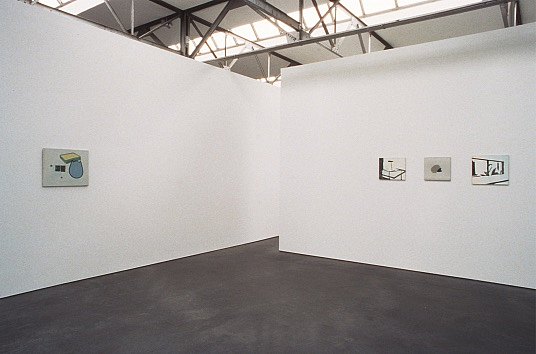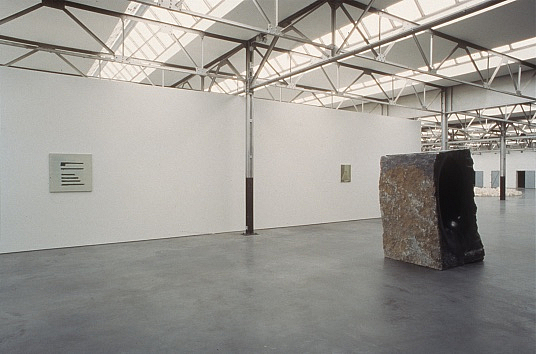Violence brews in the paintings of Luc Tuymans; though out of sight, it is always palpable, imminent and alarming. The depictions show their confusing, traumatic import only indirectly. The images seem to be incomplete, just as every recollection is incomplete. They are fragments, details from an unsurveyable whole – like the clues to a crime, the symptoms of an illness. Tuymans paints the perversion of cruelty as though it were the most normal thing in the world. It makes his predominantly small works extremely ambiguous and unsettling.
There is striking use of the close-up, the framing of the image and other visual principles which the painter has taken from the domain of film. At one time, Tuymans produced films himself. Storyboard-like drawings such as Lift (1980) betray a cinematographer’s eye. In Blacklight (1994), a chair, a sofa, a lamp and a television set are all crammed together in the right-hand corner of the image, as though we are looking through a camera as it swerves away. The cropping suggests a random picture from a passing movement and heightens the uncanny mood. The eye must adjust to the dim light, since only after this does the image of a naked body lying on the sofa begin to emerge. The scene seems to be revealed as much as it is concealed by the strange, unnatural light.
Tuymans has that peculiar ability to be involved with his subjects and, at the same time, completely indifferent to them. A homey-looking lamp and the s.s. officer’s desk lamp (Lamp 1994), made from human skin, are rendered by him with equal intensity. Seemingly unmoved, he observes the shocking reality with the clinical eye of a pathologist, to whom neither the identity nor the fate of the victim is of any importance. Revealingly, the artist has named a series of ten paintings of incurably ill people in their final stages Der diagnostische Blick (German for ‘diagnostic view’) (1992). Der diagnostische Blick iv is not so much a portrait of a patient as it is a depiction of his face: the painting offers no opportunity whatsoever for one to grasp the essence of the individual shown. Medical science can only establish a diagnosis when it sees sick people as dysfunctional objects. There exist medical photographs, made in the concentration camps, which are still being used by physicians as reference material.
Bosom (1996) belongs to the Heimat (German for ‘homeland’) series – paintings in which Tuymans sketches a wry picture of the revived self-awareness of the Flemish nationalist. The painting is an echo of the popular ultraright slogan ‘The man shall labor and the woman shall be in labor’. Tuymans shows the poignant icon of the Flemish mother’s lap for what it’s worth: as an empty phrase, an illusion.
Tuymans likens his paintings to after-images, which first emerge brightly and clearly, then disappear forever. It is this ‘vanishing point of the image’ that he seeks: the moment at which the visible is about to dissolve into invisibility, the point at which it is no longer clear what the representation actually represents. The pale colors, the subdued light and the shadowy images that characterize much of his work allude to the inadequacy of painterly representations of (historical) reality. Bathroom (1996), for example, refers to the cruelties of war: the tiled space in the death camp should make the inconceivable conceivable. The grey, foggy image looks most like a ghost that tries in vain to become concrete.
Elegant yet obdurate, the work of Tuymans attests to ‘aesthetics which cannot be interpreted in terms of morals’, as the artist himself puts it. What we are meant to think of these images is left undefined by him. Tuymans peers through the lens that isolates him from a frightening world, which is nonetheless completely his own.



